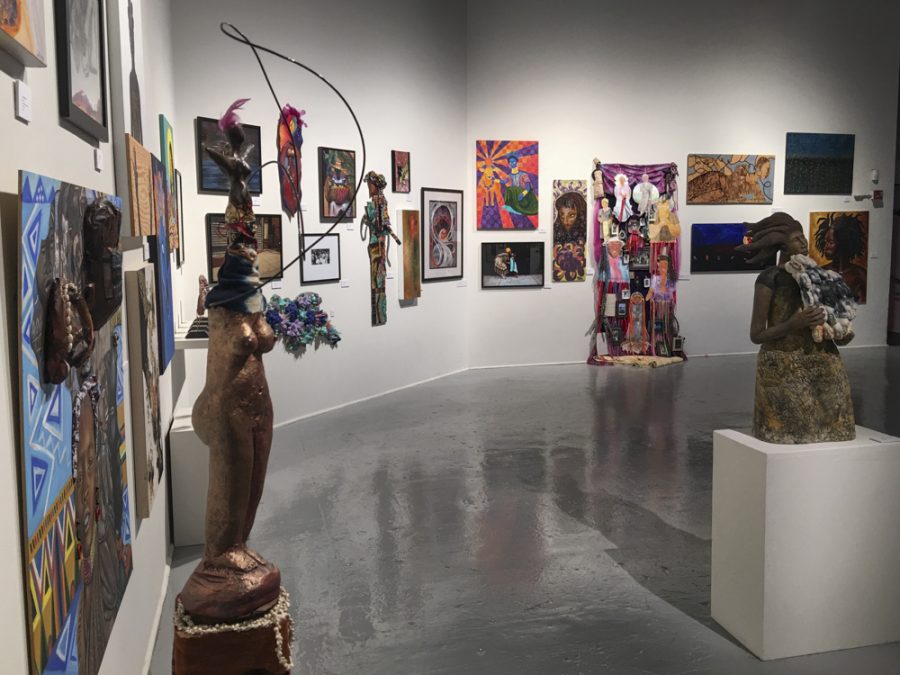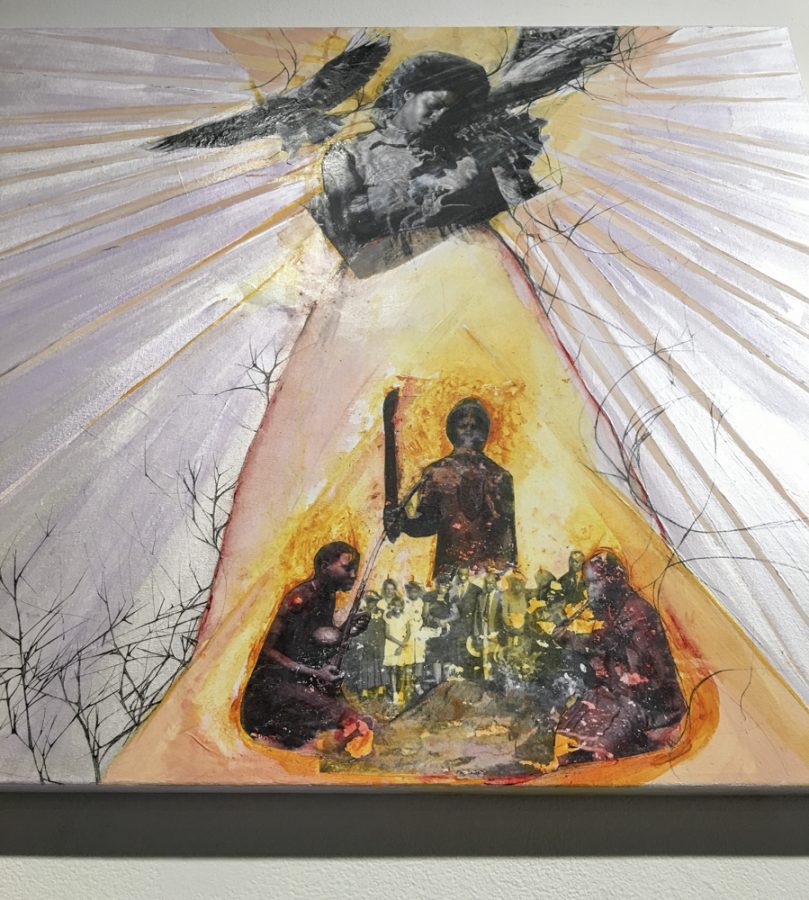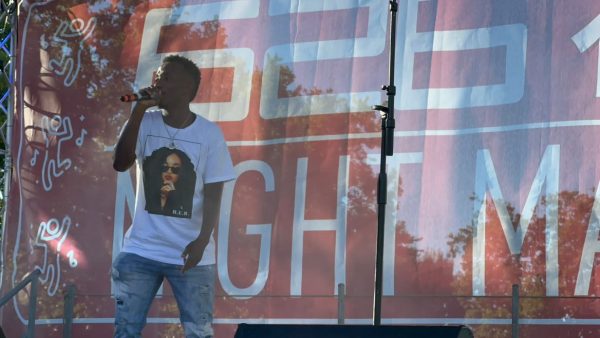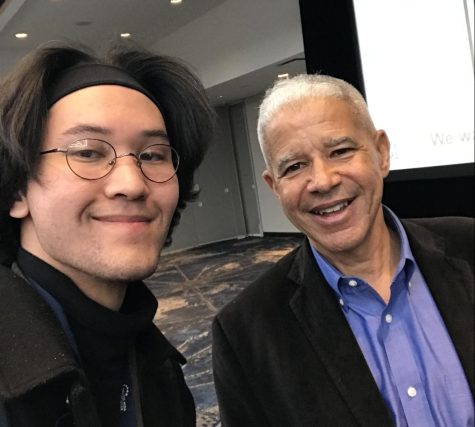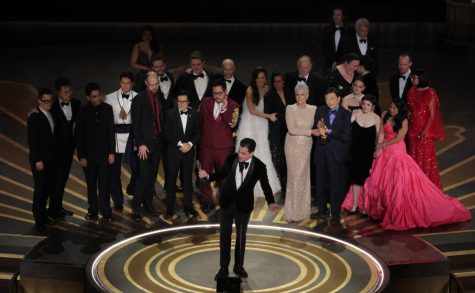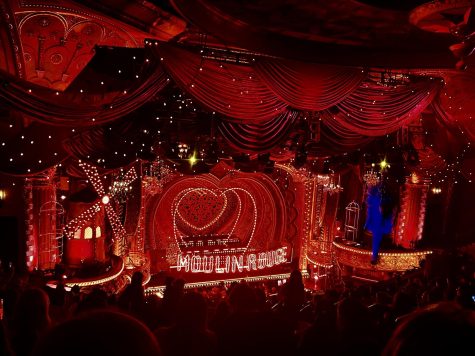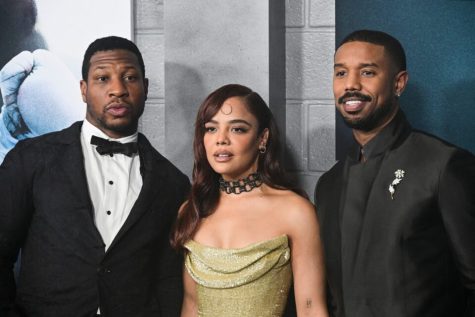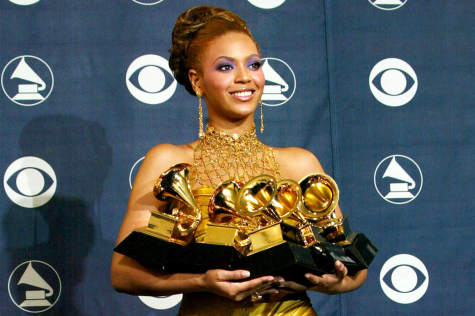Black female divinity transcends art
August 10, 2016
Throughout history, Black women’s contributions to society have essentially been disregarded. The artists of “The Black Woman is God: Reprogramming that God Code” felt the importance of extreme self-love was a matter significant enough to explore through artistic medium and show the world how much a Black woman’s voice matters by the way they manifest God.
Co-curator and Cal State East Bay’s very own English professor Karen Seneferu is part of the 60+ visual artists and 75 performing artists who contributed their work to create a voice in the urban community about how God is embodied in the Black woman through their sacrifices and triumphs. A self-taught artist from Oakland, she founded The Black Woman is God collective in 2013.
An exhibit that honors the Black female presence in every form, be it physical, spiritual or historical, the art offers views that not only resonate with feminism and politics, but autonomy, psychology, activism, history and cosmology. Described as an “Afrifuturistic aesthetic” in the BWIG website, the exhibit opened July 7 and runs through Aug. 17 at the SOMArts Cultural Center.
The initial idea for this exhibit was to challenge how women artists of color would represent their narrative, their culture, their day-to-day realities through art. Since 2013, the concept of The Black Woman is God showpiece, if not movement, has blossomed into a compelling platform for issues of social justice, urban expression and empowerment. There are over 100 pieces of artwork in forms that include installations, paintings, sculptures, dancers and film.
“We have this idea of what art looks like, but we are the originators of art anyway,” Melorra Green, community activist and co-curator of the BWIG exhibition, said in an article in SFGate. “I think we’re creating a shift of what beauty is and what art can look like.”
Sasha Kelley and Queen D. Light, two young emerging artists, and multimedia production platform House of Malico’s Malidoma Collective suggested to Seneferu that instead of all these Black women artists competing against each other for residency in the industry, they should apply altogether. In 2012, Green offered Seneferu a solo show at the African American Art and Cultural Complex in San Francisco. Seneferu said she then took this as the opportunity for various female Black artists to showcase their works together in a group concept to voice the idea of claiming oneself as a God by embracing and celebrating one’s culture.
“I had shown in museums and well-known galleries, where I was the only Black woman artist and that frustrated me,” Seneferu told The Pioneer. “I didn’t want to be the only Black woman artist speaking for the collective, and so I saw the invitation to do a solo show as an opportunity to do what I thought was more significant than just myself.”
When Seneferu applied to the common curatorial, a juried residency at SOMArts Gallery, the idea of having multiple Black women artists organizing such an exhibit featuring intergenerational commentary thrilled the executive director, she said. After about over a year of working on her project, Seneferu’s and the other artists’ work continue to correlate with contemporary culture — adversity within minorities, the fight to celebrate and keep our cultures alive, to ensure the value of Black women as innovators — and provide a space of appreciation and healing.
The exhibit reception debuted in the wake of the Philando Castile and Alton Sterling police shootings; devastating blows to the Black community and fellow supporters that further ignited the fire of the Black Lives Matter movement. After these events, Green planned for the artists to dress in white and march into the galley space chanting “We respect and love you” to the audience, Senerfu said.
“I believe this energy shifted the space for those in attendance who were looking for a safe place to release pain, frustration and anger, and recognize that Black people specifically, and the audience, generally had a place to heal from the destruction outside the gallery,” she said.
Seneferu hopes The Black Woman is God will travel worldwide and make the Black woman’s presence known. “A movement-building platform that explores the intersections of race and gender, the exhibition poses the question, ‘When Black women create, are they God?’” reads the mural upon entering the gallery. Black women are one of the most dehumanized people in the world; this gallery urges viewers to reconsider the white-dominated patriarchal constructions of Black females and be reminded that the Black woman is the mother of mankind.
A notable installation by artist Ayana Ivery is a shrine of a life-sized Black Madonna, and homage to the Lady of Guadalupe titled “Our Mother,” with mirrors surrounding her, inviting viewers to look at themselves and find peace being amongst this safe haven. The exhibit was serene and spiritual, celebrating the Black woman’s experience while evoking a sense of self-pride, no matter one’s background. It is meant to be viewed walking counterclockwise, another attendee shared with me, because the setup of the art is aimed to signify evolution.
The showcase plays with the tangible and intangible, the ancient and contemporary, faith and science. You’ll leave the exhibition with a feeling of enlightenment and deeper appreciation of the self as well as the worth of all races and gender. “Black woman… Be the author of your own story. Be who you wanna be. Be God,” writes blogger Tiara Phalon about the exhibit. For more information about the collective and gallery, visit www.theblackwomanisgod.com.




